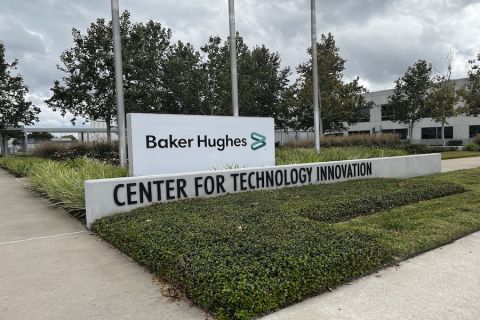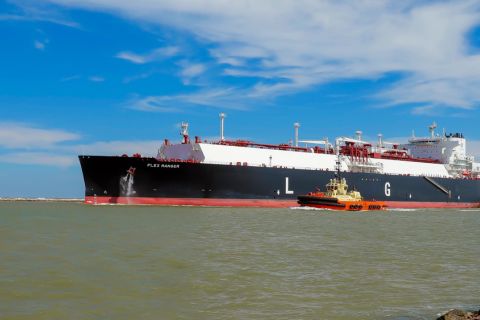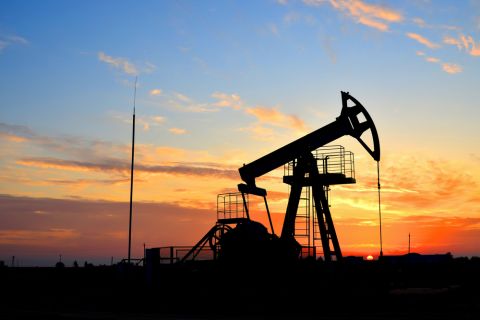
So far, 2019 has been a case of déjà vu for the midstream with a strong start for publicly traded companies, but industry executives are hoping that the rest of the year doesn’t follow the previous year’s sharp decline.
The Alerian MLP Index has experienced double-digit growth so far in January, much like what we saw in the early going of 2018. However, the index closed out 2018 down nearly 19%, which erased these gains from the start of the year.
There is cause for optimism this year, though with Raymond James noting strong tailwinds for the midstream in the form of strong domestic crude production and increasing demand for domestically produced crude, gas and liquids.
Unfortunately, the negative aspects of the marketplace from 2018 continue to be potential headwinds going in 2019. These include volatile commodity prices, large price differentials between various commodities and regions, political and regulatory concerns, and anxiety related to the overall economy.
Despite this uncertainty, Raymond James has a bullish outlook for the midstream for 2019. “[O]ur core thesis is simple: we think resilient U.S. oil production and booming U.S. hydrocarbon demand/exports should be clear tailwinds for U.S. midstream equities,” the investment firm said in its 2019 Midstream Outlook.
Raymond James notes that LNG export growth is supported by impressive project executions and high demand from Asia, but acknowledges long-term concerns in 2023-2025 as there is the risk of capacity constraint. However, the investment firm anticipates more projects to be announced in the coming months that will hopefully alleviate these concerns.
While this report has a positive outlook for LNG, its forecast isn’t as rosy for NGL. Raymond James said 2019 should be “healthy,” but NGL will be oversupplied beginning in 2020 and will continue to decouple from WTI crude prices.
According to this report, several key questions surround potential crude bottlenecks in Cushing, Okla., the Gulf Coast and the Permian Basin. “[A]lthough we expect continued build through the [first half] of the year, as new Permian pipes pull more Midland [crude] barrels to the Gulf Coast, we expect Cushing stock builds to moderate and decline into 2020,” Raymond James said.
Since U.S. refining capacity remains full—and will remain so for the foreseeable future—the bulk of refined volumes will need to be exported. The report stated that there should be ample export capacity, though Raymond James notes that Corpus Christi may have more issues than other ports.
To meet the increased demand for crude, there are a number of new pipeline systems heading to the Gulf Coast that are set to come online in 2019. However, Morningstar Commodities Research’s Pipeline Plans Suggest Tsunami of Crude Exports said this may result in a short-term overbuild of pipeline capacity.
The U.S. is already the largest producer of crude at nearly 11 million barrels per day (bbl/d), but as this production increases along with even more pipeline capacity in the next three years it’s likely to greatly exceed export capacity.
Current pipeline capacity into the Gulf Coast is about 6.3 million bbl/d with nearly 2 million bbl/d being exported. Morningstar noted that at least 15 new pipeline projects were announced in 2018.
If all of the announced pipeline systems are built and run near capacity, it could result in as much as 7.7 million bbl/d of light shale crude oil being transported to the Gulf Coast for export. These include four projects totaling 2.1 million bbl/d to transport volumes from Cushing to the Gulf Coast; there is a total of 2 million bbl/d of pipeline being developed to ship volumes from the Permian and Eagle Ford to the Texas Gulf Coast ports at Houston, Nederland, Beaumont, and Port Arthur; and a total of six projects planned to transport up to 3.5 million bbl/d of crude from the Permian and Eagle Ford to Corpus Christi.
“To meet this export demand as well as reassure potential shippers that their barrels will have access to export facilities, midstream companies have paid increasing attention to dock space during 2018,” Morningstar said.
Pipeline projects aren’t the easiest projects to construct, but deepwater export terminals are proving to be even more difficult. Onshore export docks require extensive dredging that is often held up by a lengthy approval process. The Morningstar report notes that offshore export terminals are easier to build, but they require an offshore pipeline that also includes a lengthy permitting process.
“We don’t expect any of these offshore terminals to be operating (assuming they are permitted and financed) until 2021 at the earliest. If they are delayed beyond then and if all the planned pipeline capacity…is built and in use, then the resulting tsunami or exports will almost certainly lead to dock congestion after 2021 if not before,” according to Morningstar.
However, this is a worst-case scenario as Morningstar acknowledges it is unlikely that all of the planned pipelines are built and run at full capacity. Additionally, the U.S. Energy Information Administration’s “Short-Term Energy Outlook” is forecasting a slowdown in domestic crude production.
Regardless of any potential short-term slowdown in production, it is safe to assume that given the amount of pipeline capacity being built and the vast amounts of crude reserves in the country that crude exports will continue to increase. While production may slow in the short-term with excess pipeline capacity, it’s more likely that more export capacity will need to be built in the long term.
Recommended Reading
Biden Administration Hits the Brake on New LNG Export Projects
2024-01-26 - As climate activists declare a win, the Department of Energy secretary says the pause is needed to update current policy.
Rystad Sees Little Support for Henry Hub in Coming Weeks
2024-01-26 - Rystad Energy sees little support for Henry Hub prices in the U.S. as dry gas production rises after the Jan. 17 Arctic freeze that impacted all of the Lower 48 states.
Baker Hughes Detects LNG Slowdown Solutions, Global Opportunities
2024-01-26 - Baker Hughes’ fourth quarter earnings call confronts Biden’s halt on LNG permitting with “solve itself” attitude.
Texas LNG Export Terminal Completes Required Permitting for FID
2024-01-26 - Glenfarne expects the Texas LNG project’s commercialization to be completed in the first half of 2024.
What's Affecting Oil Prices This Week? (Jan. 29, 2024)
2024-01-29 - For the upcoming week, Stratas Advisors forecast that increase in oil prices will be moderated likely due to the U.S. being cautious in response to the recent attack on U.S. troops.






